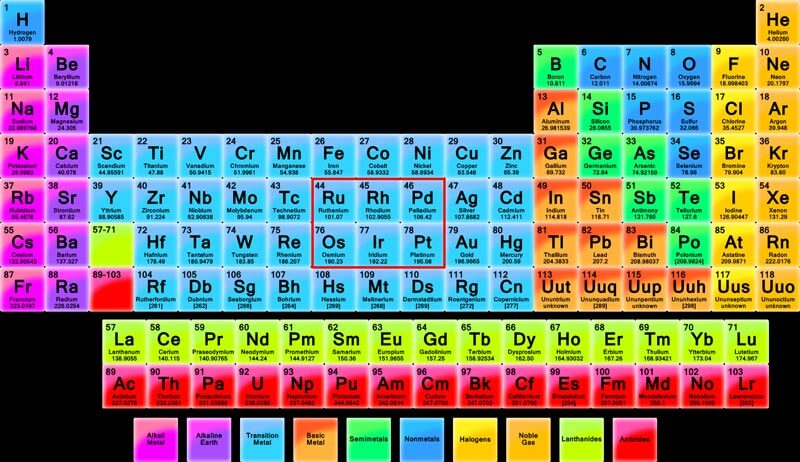Palladium vs Platinum
In the past, a good proportion of men opted out of having a wedding ring. 20 years ago, it was certainly not uncommon to see just the bride have a ring to mark the significance of the marriage.
Now, it is extremely uncommon to find a groom who chooses not to have a band.
Not only are Gent’s wedding rings usually of a greater finger size than brides, but also they tend to be a lot wider. This can mean that the average groom’s band is 4 times the weight of his bride’s band. As unusual as it is for a man’s jewellery to be more than the ladies, this is certainly the point at which it starts!
Every couple has a budget for their wedding, and like all budgets, sticking to it isn’t easy. With Platinum prices being fairly stable for a while, a good heavyweight groom’s band can easily run into £1,000+. So what are the alternatives to Platinum, that requires no plating?
This is a simple one! Palladium.
Palladium has been a very popular choice for a groom’s wedding band for quite some years now, but we find customers are still a little unsure about it. There is certainly some very misleading information on the internet, but that misleading information will not be found here!
Palladium has been used in the production of jewellery for many years, but with the surge of Platinum prices it has only become popular in the last 5 years or so. Why? Because of it’s similarities to Platinum. It is a naturally occurring element, just like Platinum. In jewellery, we use the same alloy ratio as for Palladium and Platinum (950). This meaning 950/1000 or 95%, so there is a very high quantity of the metal in the alloy.
Palladium has a natural white colour that requires no plating. Whilst it has a slightly darker colour to Platinum, to the naked eye there is little visible difference.
So, the truths!
Palladium is indeed a Platinum Group Metal (PGM). The six platinum-group metals are ruthenium, rhodium, palladium, osmium, iridium, and platinum. They have similar physical and chemical properties, and tend to occur together in the same mineral deposits.
But Palladium is a separate element. It is 50% less dense than Platinum, so it is lighter in mass. It will not wear as well as Platinum. It is also not as rare as Platinum.
But will it make a suitable wedding ring? The short answer to this is Yes, It will. If you have an exceptionally manual job then there is no doubt that Platinum will be more suitable for you, but Palladium will also live up to the job.
When couples come to RTFJ, we speak about their expectations from their wedding bands. Will it be worn at work, or not? What do you do for a living? What sort of budget did you have? This is all taken into consideration when selecting the suitable metal. What you must remember is at RTFJ we are not salesman. We make jewellery. And we advise. We feel it is as important to work to the customer’s budget as it is to make a suitable piece of jewellery. Palladium being around half the price of Platinum and 50% lighter means that you can get an identical dimension wedding band for around 1/3 of the price of its Platinum counterpart.
It is an ideal choice for grooms who are considering other metals for their wedding band. Like Zircon, Tungsten, stainless steel or Aluminium. (We do not work in these metals as their manufacture is completely different to that of precious metals).
So, faced with the question of which one to go for, our answer is simple. “Can YOU afford to go for the Platinum option?” If the answer is yes, then go for it. If the answer is NO, then go for Palladium. To put it other terms would be to compare it to the bridal gown. The silk is indeed the nicer option. It will feel nicer, and costs more. But Cotton will still provide a stunning dress!
Either way, your wedding will be just as you wanted it, but maybe with a little less stress to pay it off.
For unbiased advice on your perfect wedding ring, unusual wedding ring, or unique wedding ring, come and see us. You’ll see firsthand why we were awarded the National Winner in the Wedding Industry Awards this year as voted by the people who know us best! – Our clients.

